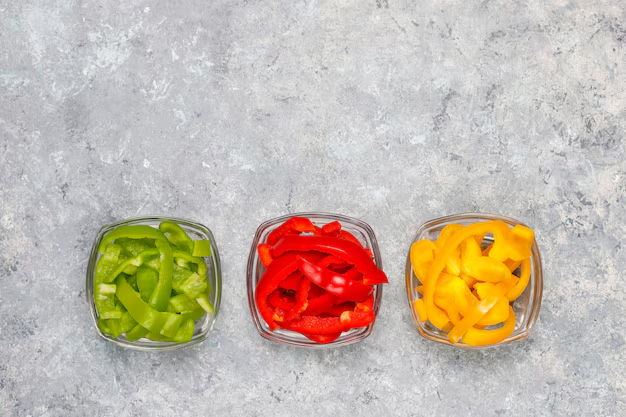How to Ensure Your Chili Stays Fresh in the Refrigerator
Chili, one of the ultimate comfort foods, is a versatile dish that warms the soul and satisfies hunger. Whether you're using beef, turkey, or opting for a vegetarian version, it's often made in large batches. This leaves many wondering about the shelf life of chili in the refrigerator. Let's delve into the practical aspects of storing your chili and explore how to maximize its freshness.
🕒 How Long is Chili Good For in the Refrigerator?
Chili typically stays fresh in the refrigerator for about 3 to 4 days. However, this time frame can vary based on the preparation and storage method used. Key factors include the type of ingredients and spices, the handling when cooking, and how quickly it's refrigerated.
- Meat-based chili: Since meat can spoil faster, it's wise to keep a close eye on red flags like sour smells or changes in texture.
- Vegetarian chili: Tends to last a bit longer due to the absence of perishable animal products, but still follow the same time frame to be cautious.
Key Indicators of Freshness
👉 Smell: Your first indication of whether chili has gone bad is the smell. If it smells off or sour, it's best to discard it.
👉 Texture: Look for signs of spoilage, such as the chili developing a sticky or slimy texture.
👉 Visual Cues: Mold or an unusual discoloration on the surface means it's time to toss it out.
🥶 Proper Chili Storage Techniques
Maintaining the quality of your chili starts with proper storage methods. Here’s how to do it right:
Cool It Quickly
Right after cooking, allow your chili to cool to room temperature before placing it in the fridge. Quick cooling can help prevent bacterial growth. Here are a few tips:
- Shallow containers: Use shallow, airtight containers to help the chili cool evenly and faster.
- Divide and Conquer: Portioning large batches into smaller containers can help cool it down more swiftly.
Optimal Refrigeration
Ensure your fridge maintains a consistent temperature. Optimal storage temperature is below 40°F (4°C) to keep the chili out of the "danger zone"—the temperature range in which bacteria can multiply rapidly.
Airtight Containers
Always use airtight containers to store chili. These containers help maintain flavors, prevent odors from seeping into the fridge, and reduce the risk of contamination.
🍲 Extending Chili’s Life with Other Methods
While refrigeration is commonly used for short-term storage, consider extending the life of your chili through freezing.
Freezing Chili
Freezing is a great method to extend the longevity of chili, often keeping it fresh for up to 4 to 6 months. Follow these steps to freeze chili effectively:
- Cool Completely: Ensure that the chili is completely cooled before you freeze it to prevent ice crystals from forming.
- Label Before Freezing: Always label the date on containers so you can keep track of its storage life.
- Use Proper Containers: Opt for heavy-duty freezer bags or containers, leaving some space for the chili to expand as it freezes.
Thawing and Reheating Tips
To maintain texture and flavor upon reheating:
- Thaw Overnight: Move the frozen chili to the fridge and let it thaw slowly to ensure even temperature distribution.
- Reheat Thoroughly: Reheat on the stove or microwave until steaming hot throughout to ensure any lingering bacteria are eliminated.
- Avoid Refreezing: Once thawed and reheated, it's not advisable to refreeze as the quality may suffer.
Season Well, Store Well: Why Ingredients Matter
The longevity of chili in the refrigerator can also depend on the ingredients used. Spices and other components play a significant role:
- Salt as a Preservative: Salt not only enhances flavor but also acts as a mild preservative, potentially extending shelf life.
- Acidic Ingredients: Items like tomatoes and vinegar can lower the pH level, creating an unfriendly environment for bacteria.
Common Mistakes to Avoid
Avoid these common pitfalls to ensure your chili stays fresh for as long as possible:
- Leaving it Out Too Long: Chili left at room temperature can quickly enter the danger zone. Aim to refrigerate it within two hours of cooking.
- Improper Seals: Using flimsy containers or forgetting to completely seal the containers can lead to contamination.
- Overcrowding the Fridge: Keeping your fridge organized and not overcrowded ensures air can circulate properly, maintaining a consistent temperature.
🌟 Quick Recap: Chili Storage Tips
Here's a handy summary to ensure your chili remains delicious and safe to consume:
| Storage Method | Time Frame | Key Tips |
|---|---|---|
| Refrigerator | 3 to 4 days | Use airtight containers, cool quickly |
| Freezer | 4 to 6 months | Use freezer bags, label, avoid refreezing |
| Best Practices | N/A | Store below 40°F, reheat thoroughly |
A Word on Safety
Storing chili effectively not only preserves its taste but also ensures it's safe to eat. Prioritizing proper storage methods reduces the risk of foodborne illnesses. Always err on the side of caution: if you're in doubt about the freshness of your chili, it's better to be safe than sorry and discard it.
Wrapping Up: Giving Your Chili the Care It Deserves
Chili is a fantastic dish that tastes even better after a day or two as the flavors meld together. By following these simple storage techniques, you can enjoy it at its freshest for longer. Whether you're making it ahead of time or savoring those delicious leftovers, knowing how to properly store and handle your chili is key to keeping it tasty and safe to eat. Here's to enjoying every last spoonful! 🌶️
